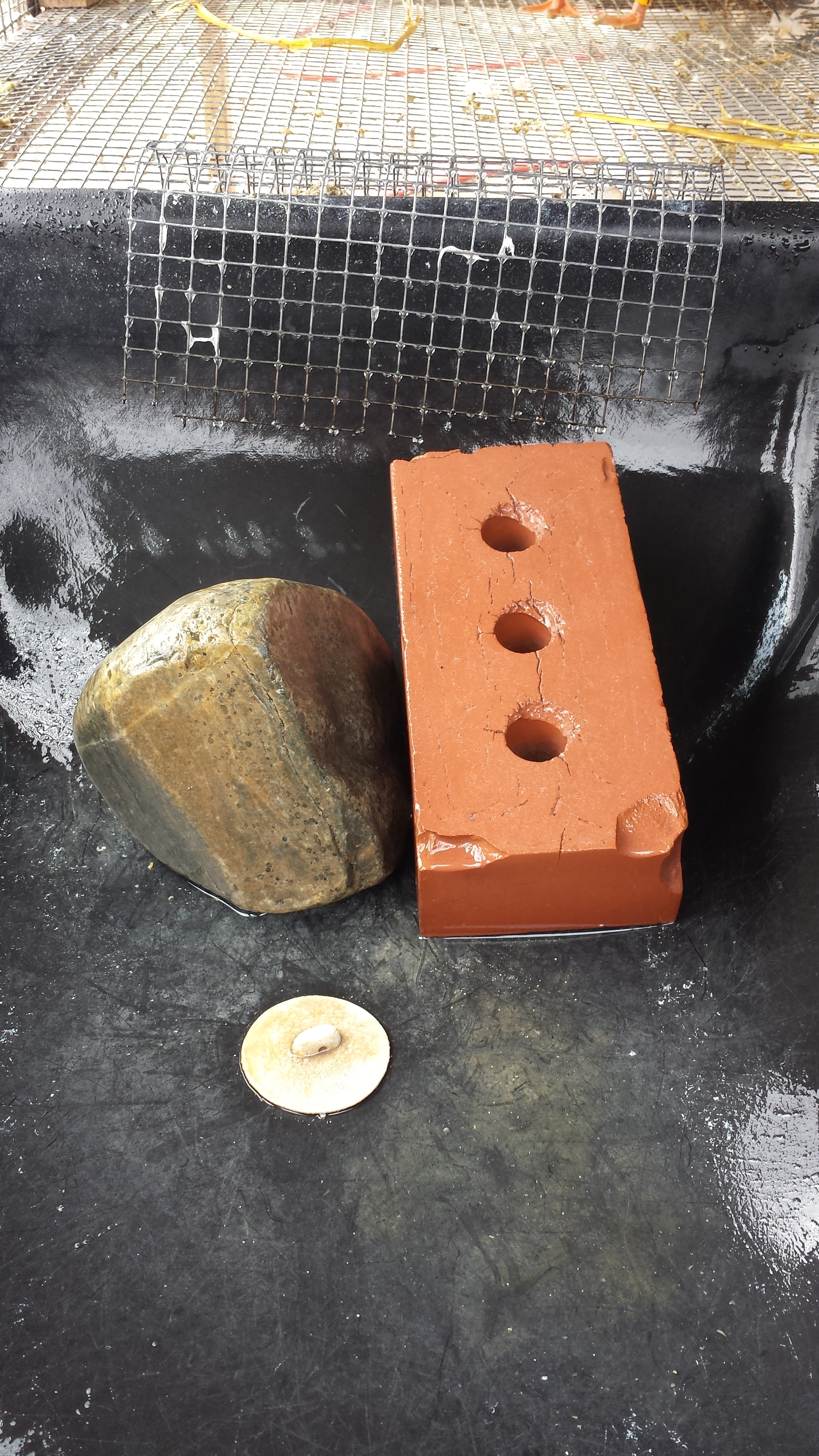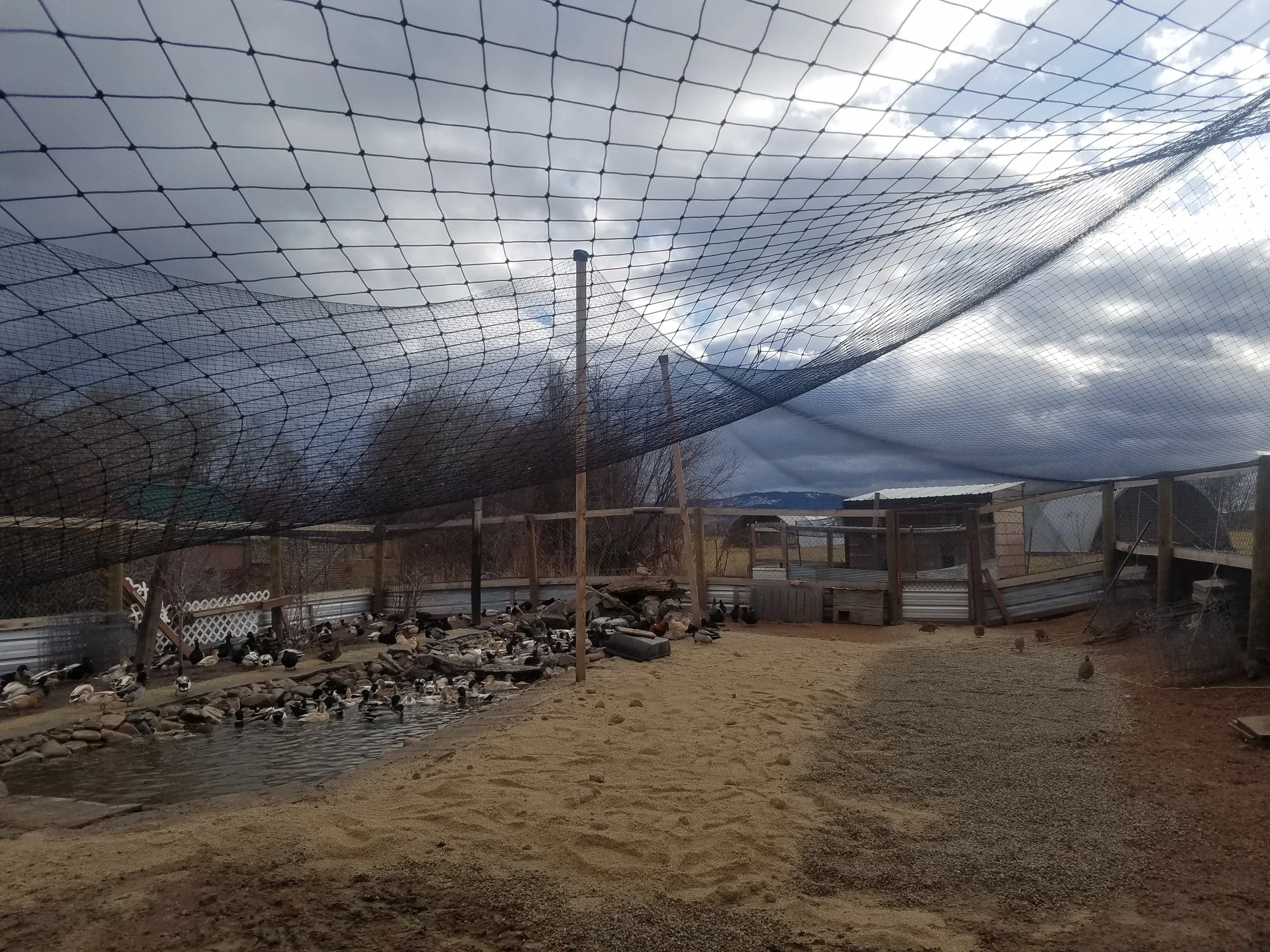Keeping Your Ducks Safe, Clean, and Happy!
A crucial part of raising Call Ducks is having pens designed to keep your birds in top condition. Unlike chickens and other poultry, Ducks LOVE to make mud and then play in it. It only takes a small amount of water on the ground for ducks to turn it into a mud pit. We use both ground pens and raised pens which are shown in more detail below. While there are some differences between these to models, there are two main principles that remain the same.
1. Ducks should have easy access to clean bathing water
Mixing pans in the concrete section of hardware stores work great as bathing pans for ducks. Ducks love to bathe; especially in clean water. Regular bathing keeps ducks healthy and in top condition. It is critical that ducks can easily get in and out of bathing pans. We have bricks and/or rocks in all of our bathing pans that the ducks can use to hop out of the pans. If a bird gets stuck in pan, it may stop bathing for fear of becoming stuck again or it may even die from hypothermia if it becomes waterlogged.
2. Clean pens regularly to keep ducks out of manure and mud
When bedding begins to disappear under manure and mud it is time to clean the pen. Ducks will have a hard time staying in good condition if their pen is not regularly cleaned. When pens are not cleaned enough, ducks' feathers become soiled and the bathing water gets dirty faster than you can change it.
Tips for making ground pens
Have at least a 6" layer of coarse sand for drainage.
Sand plays a large role in reducing mud because it provides drainage. It is most crucial to have sand around high traffic areas where the ducks eat, drink, bathe, and rest. It is not necessary or recommended to cover the entire pen in sand since ducks love to forage around in grass for bugs and grubs. If the grassy area starts to become muddy--this is especially a problem during rainy periods--it is best to regulate how much time the ducks get to spend in that area in order to preserve the ground.
Put about 4" of bedding on top of the sand.
Bedding can be White or Cedar shavings from your local farm supply store. However, if you are going to be using quantities of bedding it can get expensive. A good way to save money on bedding is to check with a custom woodwork shop as they often have shavings they are happy to donate. This layer of bedding will make cleaning the pens much easier. When cleaning ground pens, only take off the top (dirty) layer of bedding. It is good to leave a layer of bedding since it is easier to run a shovel over shavings rather than directly on sand.
Use water porches
Water porches are great for reducing the mess directly around the watering area. Waterers can be set on top of water porches or encircled with water porches. Encircling the pan can make it easier for your ducks to get in the pans and it provides more mud protection. If automatic or fountain waterers are being used, set them on top of a water porch to reduce mud. 1/2" X 1/2" hardware cloth works well for building water porches.
Lock the birds in an enclosed area at night
If your birds have access to an outside area, lock them inside before it gets dark to keep them safe. Ducks don't like airtight spaces where it gets stuffy, but they need to have a dry area without drafts at bird level. While using chicken wire to enclose a pen can work, it is not predator. Raccoons can reach through chicken wire and may even be able to tear it. If you are going to use wire to enclose your pen, welded wire is the best option. We recommend using welded wire that has openings no bigger than 1/2" by 1/2" in areas within reach of predators. Consider your climate and the direction of storms. Winter enclosures need to be foremost draft free and dry whereas summer enclosures need to have plenty of shade and air movement over the birds slightly, but not directly on them. Ideally, an opening 1 foot from the ground on one side is matched with another opening 3-5 feet above above the ground for summer enclosure. In the winter, you could simply close the lower opening and significantly reduce the size of the upper one.
Tips for making raised pens
While ground pens are great because they allow the ducks to forage, some situations are best suited for using raised pens. Raised pens are great for:
Accommodating multiple smaller matings for breeding purposes.
Situations where there is not sufficient area for ducks to be on the ground
Keeping ducks off the ground during rainy periods to keep the ducks and the ground in good condition
Note: During the winter in cold climates (like here in Montana) it is best for birds not to be in raised pens since these pens are not as warm as an enclosed ground pen. If it is going to be below zero degrees or if there is a severe wind-chill, ducks should not be in a raised cage.
The pen pictured below is a design that has worked well for us. This particular pen was built in 2004 and still works great!
This pen is 8' long X 4' wide X 18" deep. The 2X4 corner posts are 4' tall. The frame is constructed with 2X2s. Instead of buying 2X2s, it is cheaper (and makes a stronger frame) to rip 2X4s in half for the frame material. The floor is made from 1/2" X 1/2" hardware cloth. We also recommend using this for the sides since it is harder for predators to reach through than chicken wire.
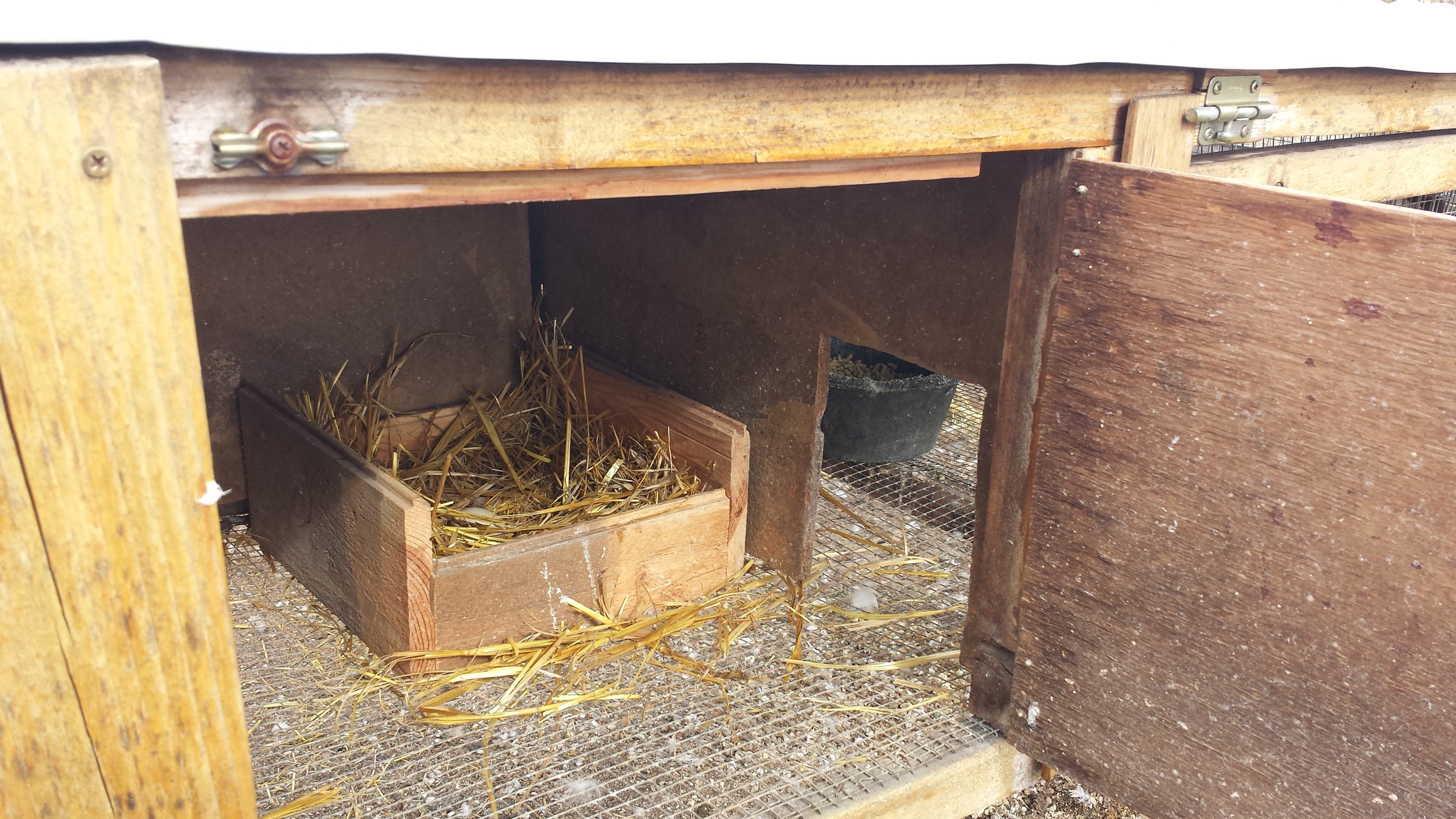
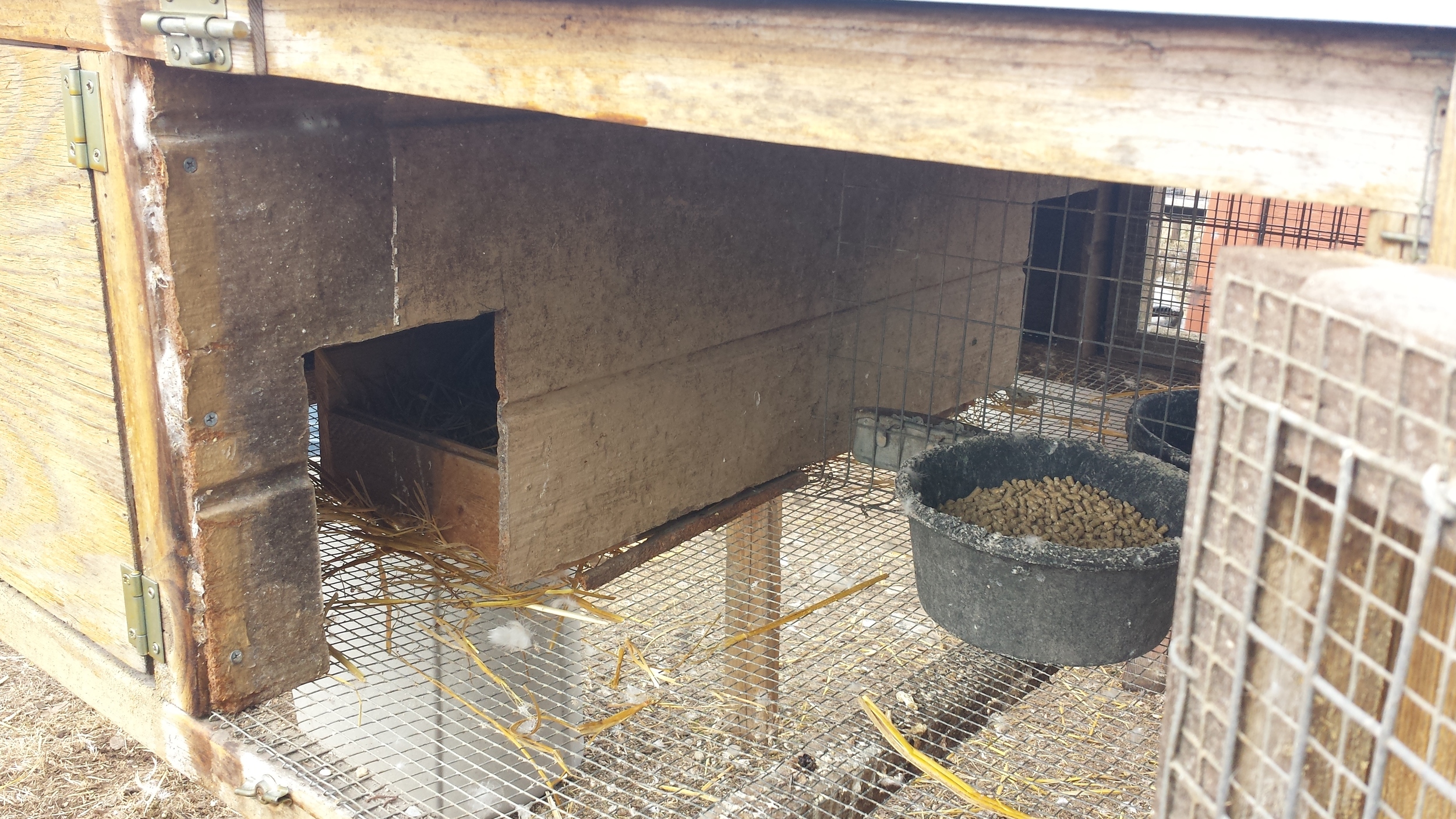
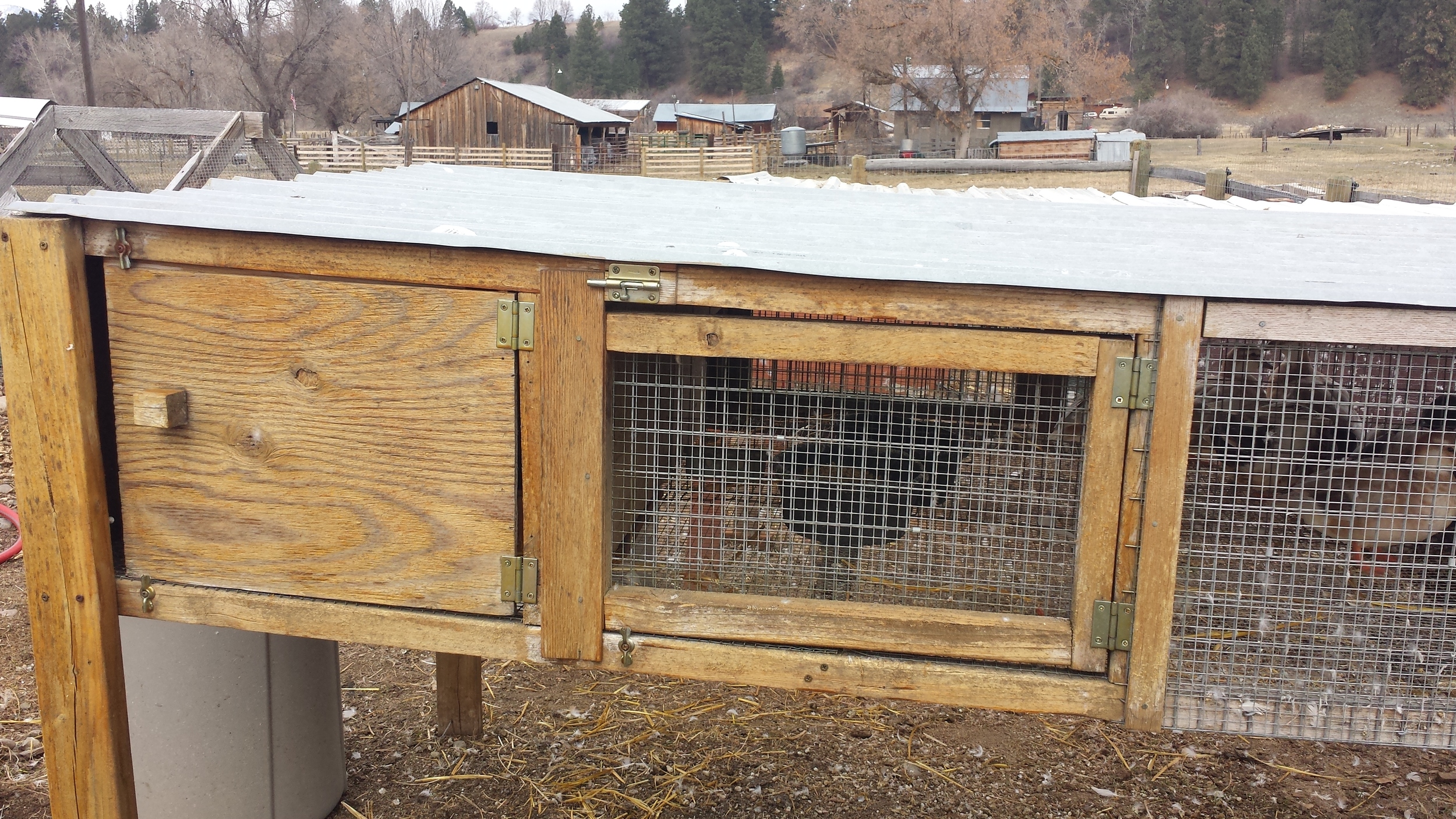
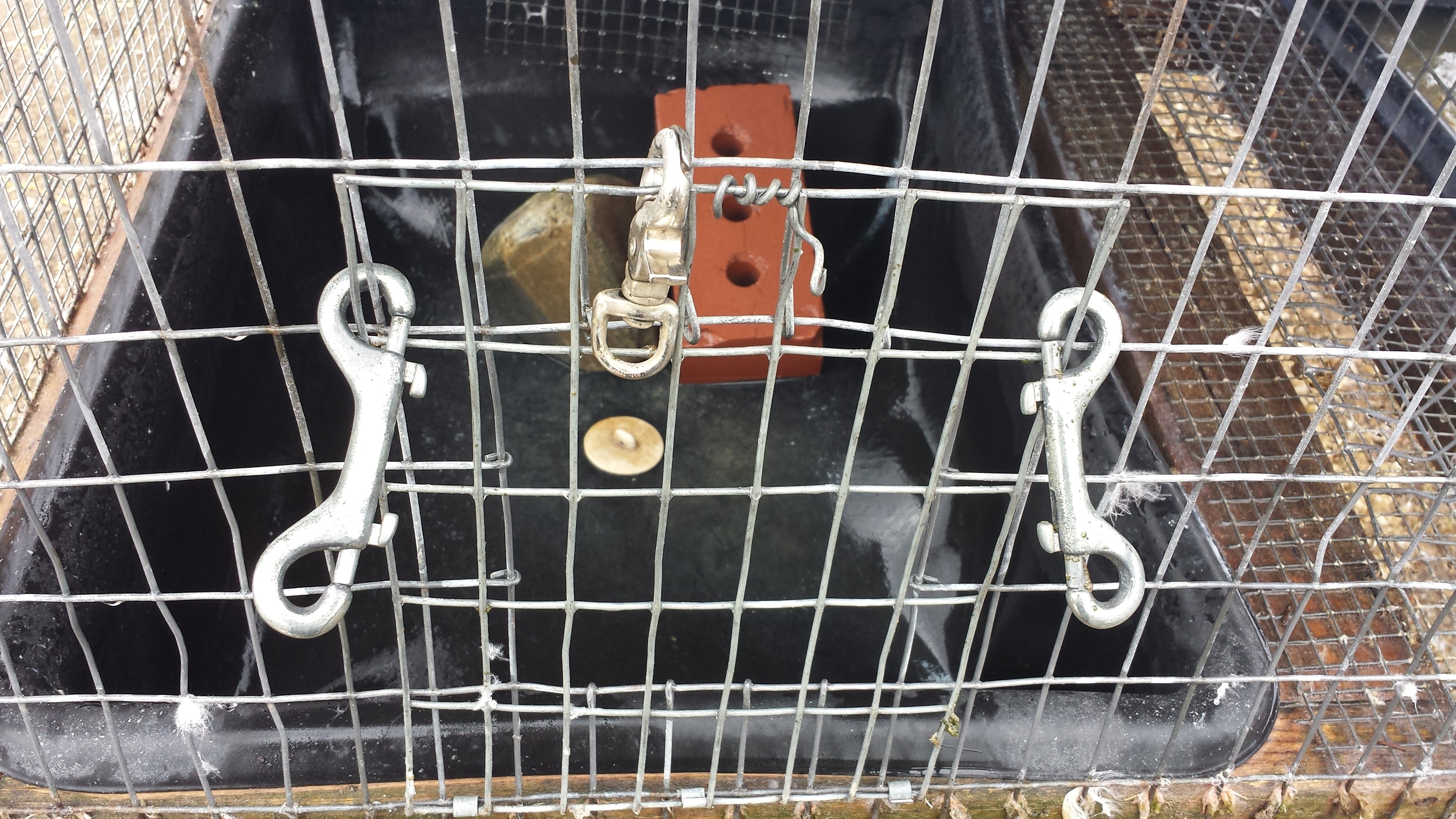
This particular pen is divided in half lengthwise so it can hold two matings. We have pens like this one that are not divided so they can accommodate a single larger mating. On each side of this pen there are three access points. The two main doors are for accessing the nest area and the main pen area. The third access point is a small wire door for changing the water. This pen has a wire floor throughout, while our other pens have wooden floors in the nesting area, which is where we also keep the feed.
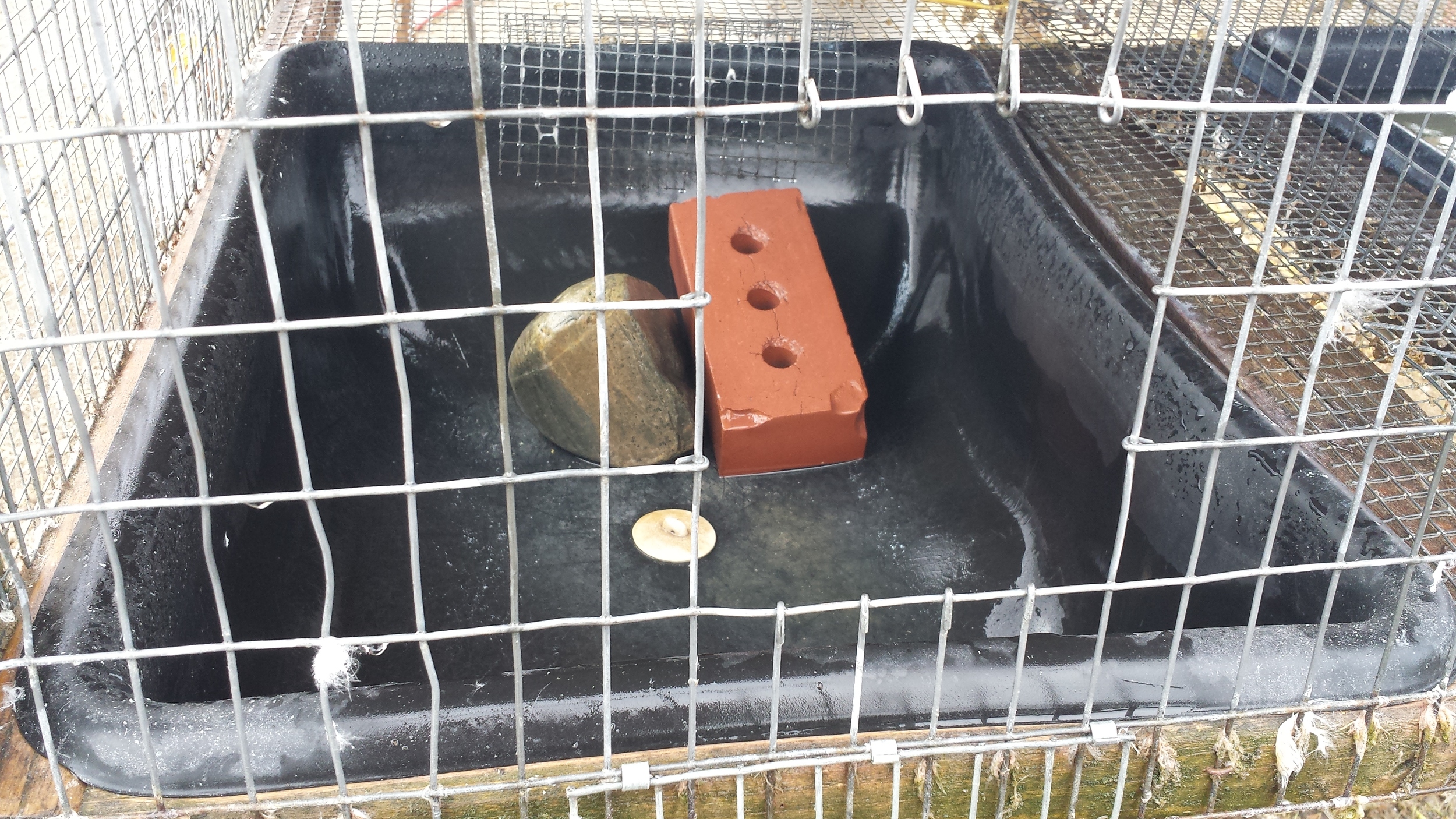
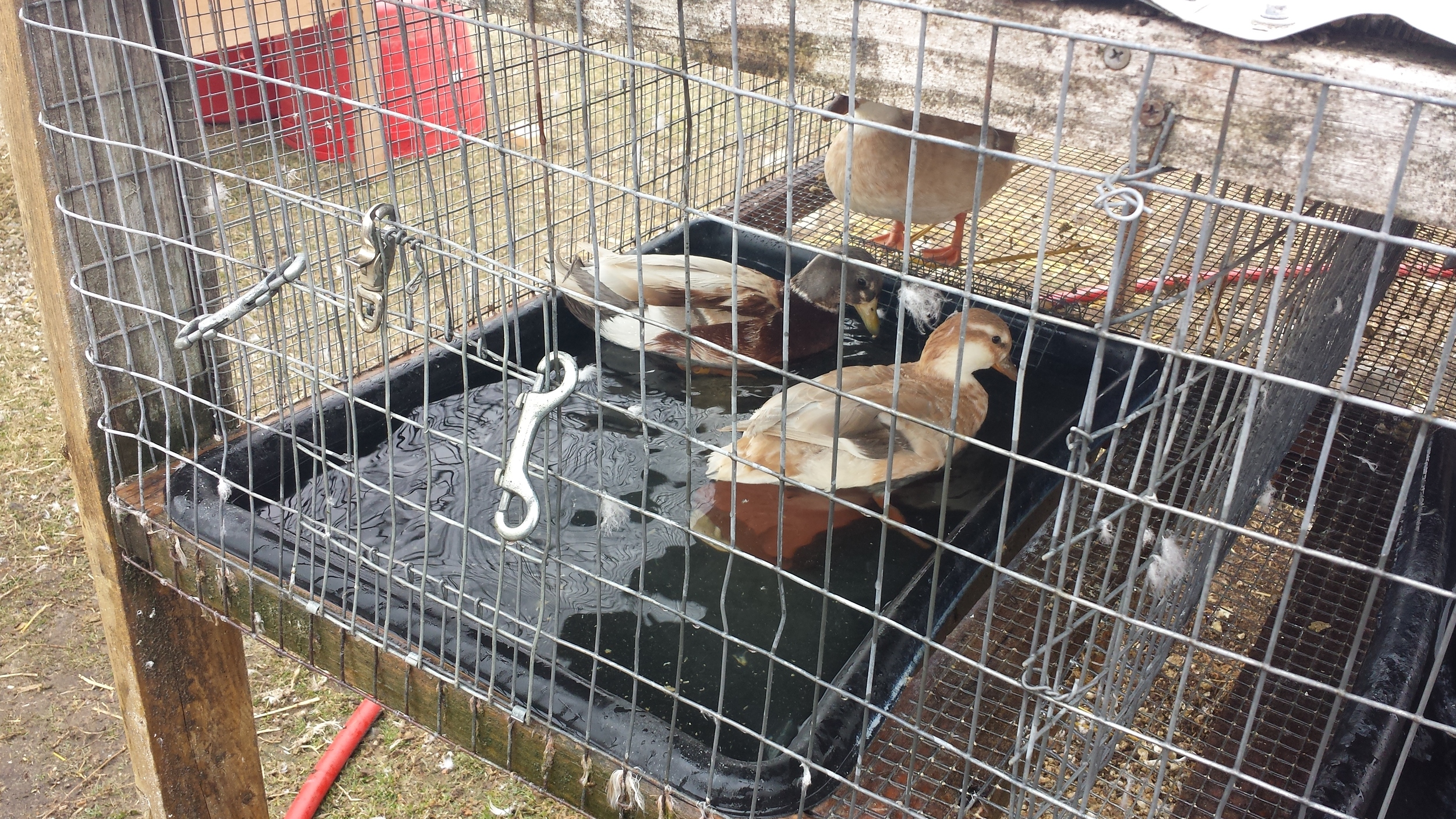
General purpose mixing pans work great for waters. Hanging the pan from the cage floor makes it much easier for the ducks to get in the pan which facilitates bathing. Build the frame for the pan so that it catches the lip of the pan and make sure it is a fairly snug fit. If it is not snug, over time the pan will pull away from the frame. Install a drain plug in the middle of the pan. When changing waters, simply pop the plug up from the underside of the pan--yes your hand will get wet. If you find your ducks unplugging and draining the pan, just put a small rock on top of the plug.
**It is important to make it easy for your ducks to get out of the pan.** Use a combination of rocks and bricks at the edge of the pan for the ducks to step on. You may even want to install a wire ramp as shown in the picture.
Below are some pictures of our other pens



